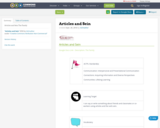
Articles and Sein
The Family
- Subject:
- Arts and Humanities
- Languages
- Material Type:
- Lesson
- Date Added:
- 09/20/2018

Articles and Sein
The Family
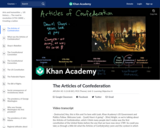
Before the United States had the Constitution, it had the Articles of Confederation, a much weaker government that lasted from 1777 to 1789. In this video, Kim and Leah discuss the pros and cons of the Articles, and the reasons they were discarded in favor of a new Constitution.

This is a full lesson plan that includes instructor script, PowerPoint slides, and student activities about the Articles of Confederation and the Continental Congress.
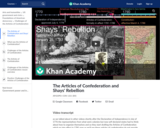
An introduction to the Articles of Confederation and its weaknesses. Shays' Rebellion was one of the catalysts for the Constitutional Convention of 1787.
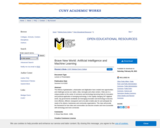
9. Brave New World - AI/ML
The trifecta of globalization, urbanization and digitization have created new opportunities and challenges across our nation, cities, boroughs and urban centers. Cities are in a unique position at the center of commerce and technology becoming hubs for innovation and practical application of emerging technology. In this rapidly changing 24/7 digitized world, city governments worldwide are leveraging innovation and technology to become more effective, efficient, transparent and to be able to better plan for and anticipate the needs of its citizens, businesses and community organizations. This class will provide the framework for how cities and communities can become smarter and more accessible with technology and more connected.

How humans have shaped plants and animals through artificial selection and domestication.
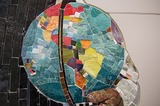
This unit explores the various ways information and ideas about climate change are presented through a variety of media. This includes the evaluation of social media posts, research into climate change issues, and an exploration of contemporary art and artists.
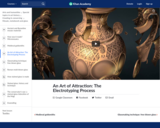
Tiffany and Company’s famous Bryant Vase was meticulously crafted by highly skilled artisans—among them, Augustus Saint-Gaudens and Eugene J. Soligny—who worked the silver for more than a year. Curator Ellenor Alcorn describes how Tiffany then used the fascinating nineteenth-century process of electrotyping to create presentation copies. View this work on metmuseum.org. Created by The Metropolitan Museum of Art.

Happiness is in fact an approach, a way of life beyond emotions alone. It refers to living and enjoying a good quality of life and experiencing well-being.
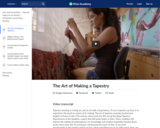
Learn how tapestries were made in the time of Louis XIV and are still made today. Explore the process of tapestry weaving at the Gobelins Manufactory in Paris, where historical techniques dating to the time of Louis XIV are used to make contemporary works of art. Video chapters: Introduction - 0:04 Designing a Tapestry - 1:08 Colorful Threads - 2:17 Preparing a Loom - 4:36 Weaving - 6:15 This video was produced in conjunction with the exhibition "Woven Gold: Tapestries of Louis XIV," on view at the Getty Center, December 15, 2016–May 1, 2016. http://www.getty.edu/art/exhibitions/french_tapestries/.
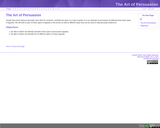
A lesson on Logos, Pathos, and Ethos and how to use them.
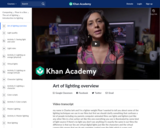
Introduction to the art of lighting.

Nebraska Honors Program
CLC Expanded Learning Opportunity Clubs
Arts Around the World Club Curriculum
Spring 2019
Grade Level: Kindergarten through second grade
Ideal Number of Attendees: 7-15 students
Goal of Club: Increase the cultural and global awareness of students
Resources: Various Pinterest ideas
Content Areas: Social Studies and Arts
Final Products: Weekly crafts that are related to the country being studied
Introduction to Club: This Arts Around the World club introduces students to other countries
and cultures through engaging crafts
Length of Club: 1 hour and 15 minutes
Tips and Tricks: Have extra activities (such as coloring pages or worksheets) available for
children who finish at a faster pace, and watch for students who are becoming distracted.

These active process-oriented lessons focus on concepts of line direction and type, organic shape, 3-D form, real and implied texture, secondary color, and principles of composition. Literacy-infused lessons explore text direction/spacing, observation, description, and story elements through drawing, painting, collage, clay modeling and printmaking.
The K-6 lesson handbooks were originally produced for the Lake Washington School District with grants from 4culture and ArtsWA. Encourage your colleagues, other schools, and organizations to use these materials for non-commercial, educational purposes at no cost by downloading their own copy at: http://artsedwashington.org/portfolio-items/alic-2
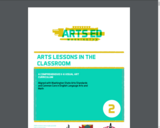
A broad range of art is created using concepts of contour and line type, abstraction, color palette, 3-D form, and positive and negative space. Students make both realistic and abstract drawings, relief prints, paintings, and paper sculptures. Literacy-infused lessons include making sketch/journal entries, inventing clay characters and illustrating stories and poems in collage.
The K-6 lesson handbooks were originally produced for the Lake Washington School District with grants from 4culture and ArtsWA. Encourage your colleagues, other schools, and organizations to use these materials for non-commercial, educational purposes at no cost by downloading their own copy at: http://artsedwashington.org/portfolio-items/alic-2
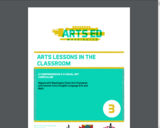
Fundamental concepts and skills are applied in new ways. Line is used to invent characters in monotype prints and show figures in action within drawings and wire sculptures. Elements of scale, horizon, overlapping, shape and texture in painting and printmaking reference specific time and place for settings. Students also visualize and write in response to art.
The K-6 lesson handbooks were originally produced for the Lake Washington School District with grants from 4culture and ArtsWA. Encourage your colleagues, other schools, and organizations to use these materials for non-commercial, educational purposes at no cost by downloading their own copy at: http://artsedwashington.org/portfolio-items/alic-2
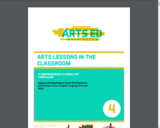
Building traditional skills in drawing and painting is emphasized through study of proportion, value, color mixing, and space. Principles of balance and unity in 2-D and 3-D are explored through constructing tactile collages and paper sculptures. In literacy infused lessons, students connect word choice, detail, narrative and figurative language with images.
The K-6 lesson handbooks were originally produced for the Lake Washington School District with grants from 4culture and ArtsWA. Encourage your colleagues, other schools, and organizations to use these materials for non-commercial, educational purposes at no cost by downloading their own copy at: http://artsedwashington.org/portfolio-items/alic-2
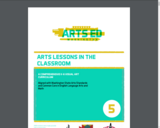
Skills are refined through making pen and ink drawings, watercolor paintings, and sculptures focusing on proportion, value, and scale. Translating words into pictures and pictures into words is investigated through depicting setting, combining shapes for meaning, using color for mood and responding to art. Students also create prints and then explain the printmaking procedure in writing.
\The K-6 lesson handbooks were originally produced for the Lake Washington School District with grants from 4culture and ArtsWA. Encourage your colleagues, other schools, and organizations to use these materials for non-commercial, educational purposes at no cost by downloading their own copy at: http://artsedwashington.org/portfolio-items/alic-2

This creative start introduces concepts of line variety, geometric shape, actual texture, primary color, and pattern through exploratory drawing, painting, collage, and stamping. In literacy infused lessons, students make decorative letters, identify word sequence, analyze visual clues, and develop pictures by linking words and images.
The K-6 lesson handbooks were originally produced for the Lake Washington School District with grants from 4culture and ArtsWA. Encourage your colleagues, other schools, and organizations to use these materials for non-commercial, educational purposes at no cost by downloading their own copy at: http://artsedwashington.org/portfolio-items/alic-2
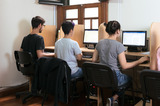
No contexto do Ensino e Aprendizagem, o professor deve aproximar-se cada vez mais ferramentas tecnológicas para suporte as aulas.